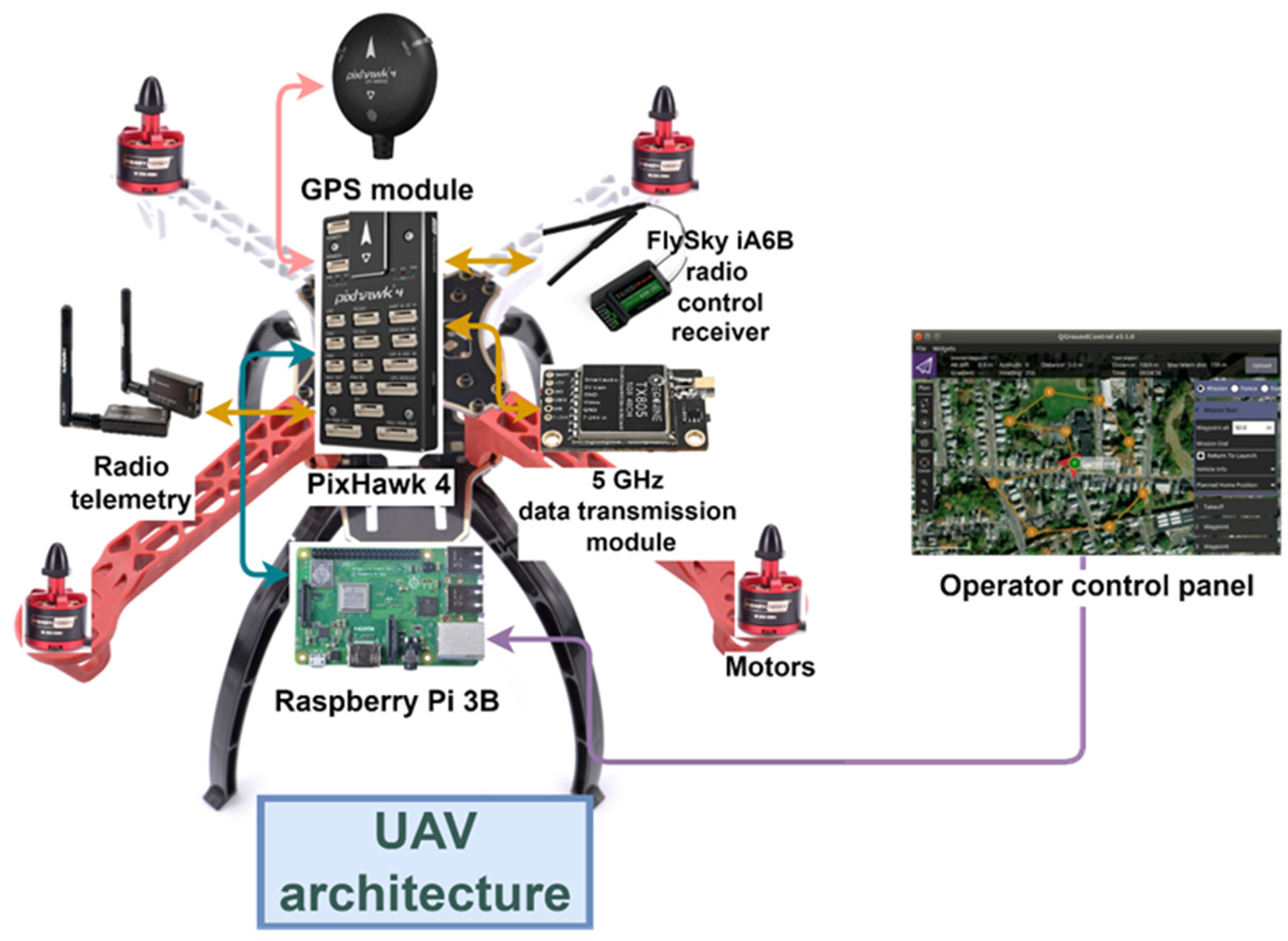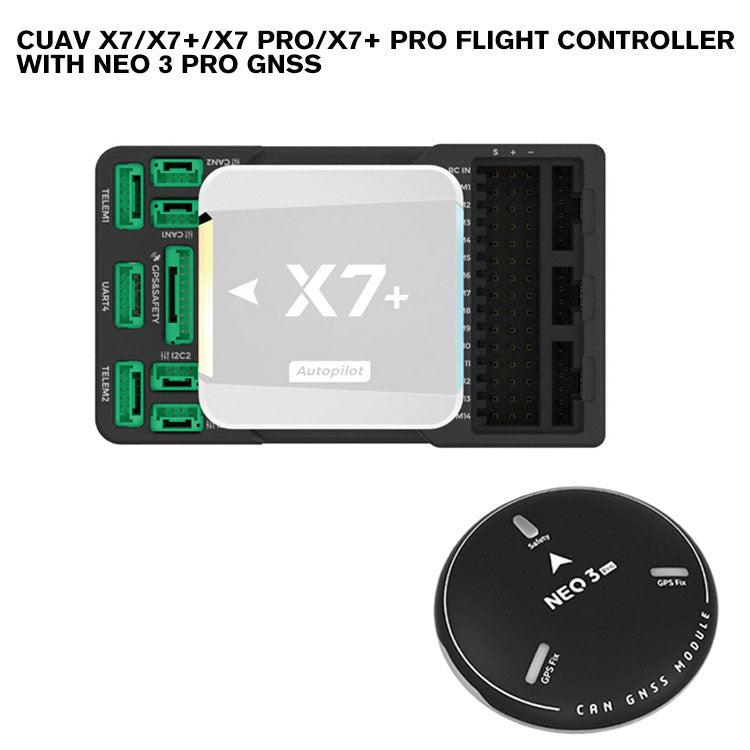SparkNavi Drone Flight Controller and GNSS/INS Made in Taiwan: Cutting-Edge Solutions for UAVs
SparkNavi Drone Flight Controller and GNSS/INS Made in Taiwan: Cutting-Edge Solutions for UAVs
Blog Article
The Value of Drone Flight Controllers in Modern Aerial Technology: Trick Elements and Their Impact
In the realm of modern aerial modern technology, drone trip controllers act as the pivotal systems that orchestrate a drone's efficiency and abilities. These innovative systems integrate necessary components such as microcontrollers and GPS modules, facilitating security and precision in trip operations. Their duty is particularly obvious in self-governing features, where sophisticated algorithms improve navigation and obstacle avoidance. As sectors progressively depend on drones for applications varying from agriculture to security, the progressing modern technology within trip controllers elevates crucial questions concerning their future impact and potential developments. What developments exist ahead that could redefine our understanding of drone abilities?

Review of Drone Trip Controllers
In the realm of aerial innovation, drone trip controllers act as the vital mind of unmanned airborne automobiles (UAVs), allowing exact ability to move and stability throughout trip. These sophisticated systems incorporate sensing unit information, processing formulas, and control inputs, allowing drones to carry out complex flight patterns with precision.
Drone flight controllers use numerous sensors, such as gyroscopes, accelerometers, and GPS components, to analyze the UAV's positioning and position in real-time. This details is vital for maintaining equilibrium and ensuring secure procedure in diverse ecological conditions. The controllers procedure this information to make immediate adjustments to the drone's motors, allowing for smooth transitions and receptive handling.
Additionally, trip controllers are equipped with innovative software that supports attributes such as waypoint navigating, challenge evasion, and self-governing trip capacities. This software application is critical for both recreational and commercial applications, where dependability and precision are extremely important. As drone modern technology continues to advance, the development of flight controllers will certainly play an essential function in enhancing UAV versatility, capability, and safety, eventually broadening their applications throughout various markets.
Key Parts Explained
Recognizing the basic components of drone flight controllers is essential for grasping how these systems operate properly. At the heart of a trip controller is the microcontroller, which works as the brain, refining information from various sensors and executing commands. Vital sensing units consist of accelerometers and gyroscopes, which determine the drone's orientation and activity, supplying critical feedback for stablizing.
One more trick element is the barometer, which gauges altitude by gauging air pressure, while GPS components provide positional data, allowing autonomous navigating - SparkNavi drone flight controller and GNSS/INS made in taiwan. The trip controller also interfaces with Electronic Speed Controllers (ESCs), which regulate the speed of the drone's motors based on the controller's commands
Communication modules, such as radio receivers, help with remote control input, permitting drivers to send out commands in real-time. Additionally, some trip controllers integrate software application that can deal with intricate algorithms for waypoint navigating, trip preparation, and telemetry data evaluation.
Duty in Trip Security
Central to preserving flight stability, drone flight controllers utilize sophisticated algorithms to process sensing unit information and make real-time changes. These controllers are outfitted with a selection of sensors, consisting of gyroscopes, accelerometers, and measures, which constantly keep an eye on the drone's elevation, rate, and orientation. By translating this information, the flight controller can recognize deviations from the preferred flight course and respond promptly to keep stability.
For example, if a drone experiences an unanticipated gust of wind, the trip controller can rapidly adjust the electric motor speeds to counteract the disturbance, making sure a consistent trip trajectory. This capability is essential not just for hand-operated flight operations yet also for click for source executing complex maneuvers and preserving smooth flight in different environmental problems.
.jpg)
Furthermore, the advanced algorithms used in flight controllers, such as PID (Proportional-Integral-Derivative) control, enable fine-tuning of the drone's action to changes in trip conditions. By enhancing these control parameters, flight controllers can boost stability, boost responsiveness, and decrease pilot work. Ultimately, the function of trip controllers in making sure trip stability is crucial for the risk-free and reliable procedure of contemporary drones throughout diverse applications.
Influence On Autonomous Operations

Autonomous procedures are specifically important in varied applications such as agriculture, security, and shipment services. With boosted flight controllers, drones can autonomously navigate fixed routes, successfully collect data, and adapt to vibrant environments. This ability minimizes the requirement for constant human oversight, therefore boosting operational effectiveness Full Report and safety and security.
Moreover, the application of artificial intelligence strategies within trip controllers enables drones to enhance their efficiency with time by finding out from previous objectives. This flexibility leads the way for more advanced self-governing applications, such as swarm innovation, where several drones collaborate their activities to attain an usual objective.
Future Trends in Flight Controllers
Innovations in trip controller innovation are poised to change drone abilities in the coming years. One considerable pattern is the assimilation of fabricated knowledge (AI) and artificial intelligence algorithms, enabling drones to find out from their environments and make real-time decisions. This development will enhance independent navigating, obstacle avoidance, and mission preparation, dramatically boosting functional performance and security.
Moreover, the advancement of sophisticated sensor technologies, such as LiDAR and multispectral imaging, will give flight controllers with richer information inputs. This will promote a lot more advanced analytical capabilities, allowing drones to perform complicated tasks, such as precision farming, rescue and search, and framework assessments with unmatched accuracy.
An additional arising pattern is the miniaturization of flight controller components, which will certainly cause lighter and much more portable drones. This advancement will extend trip durations and haul capabilities, making drones much more versatile for different applications.
Final Thought
Finally, drone trip controllers offer as essential elements in modern-day airborne modern technology, ensuring stability and precision in maneuverability with the assimilation of microcontrollers, accelerometers, and GPS modules. SparkNavi drone flight controller and GNSS/INS made in taiwan. Their capability to enable autonomous operations and adapt to various applications underscores their importance across multiple industries. As developments in synthetic intelligence and sensor technology remain to emerge, the potential for enhanced capacities and boosted functional performance in drone systems will likely improve the future of airborne applications
Central to preserving flight stability, drone trip controllers make use of innovative formulas to process sensor data and make real-time adjustments. By translating this data, the flight controller can determine inconsistencies from the desired trip path and respond promptly to keep security.
Moreover, the sophisticated formulas utilized in trip controllers, such as PID (Proportional-Integral-Derivative) control, enable for fine-tuning of the drone's click over here action to modifications in flight conditions. Inevitably, the duty of flight controllers in ensuring trip security is crucial for the risk-free and effective operation of modern drones across varied applications.
The improvements in drone flight controllers not just improve flight security but additionally substantially influence independent operations. SparkNavi drone flight controller and GNSS/INS made in taiwan.
Report this page